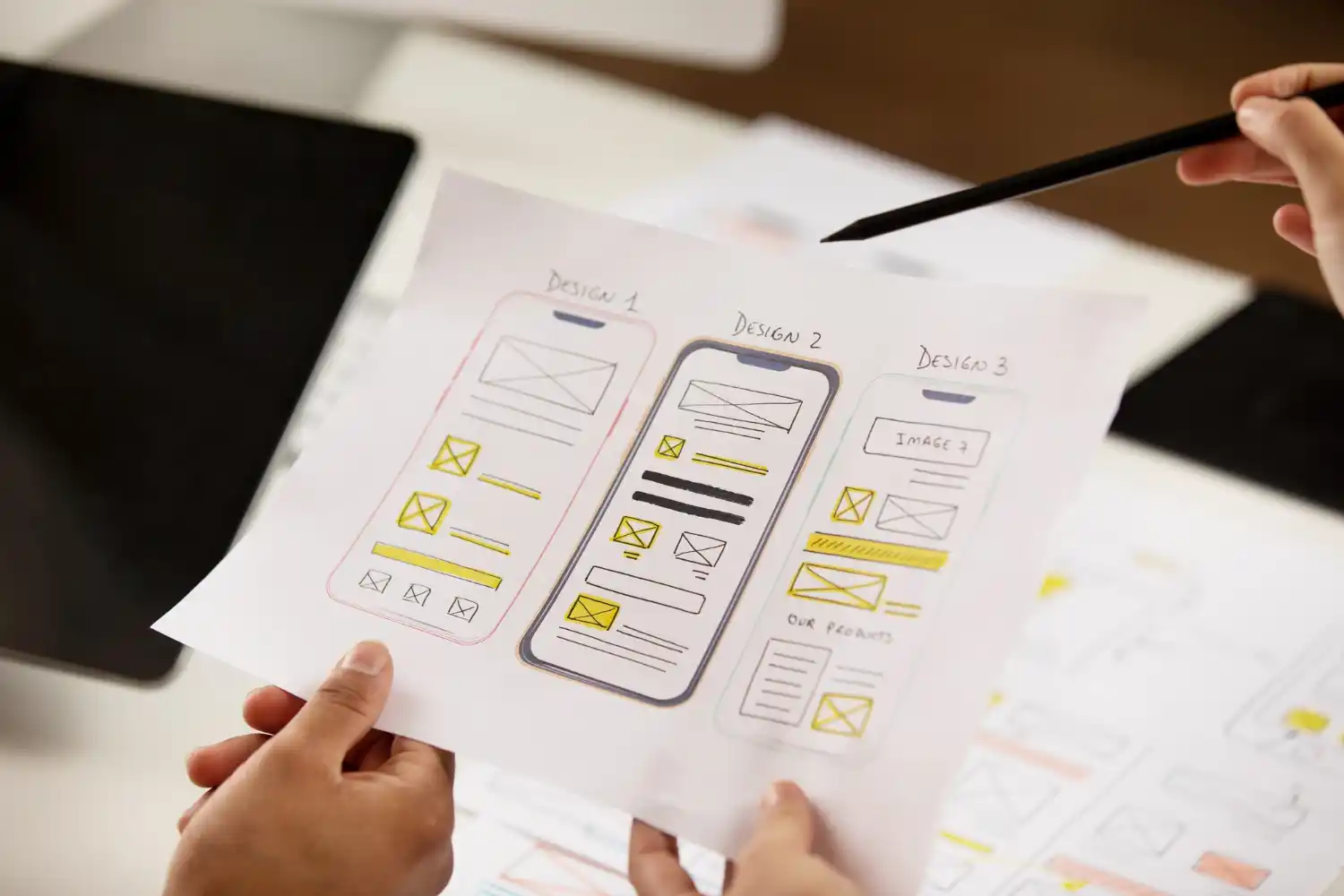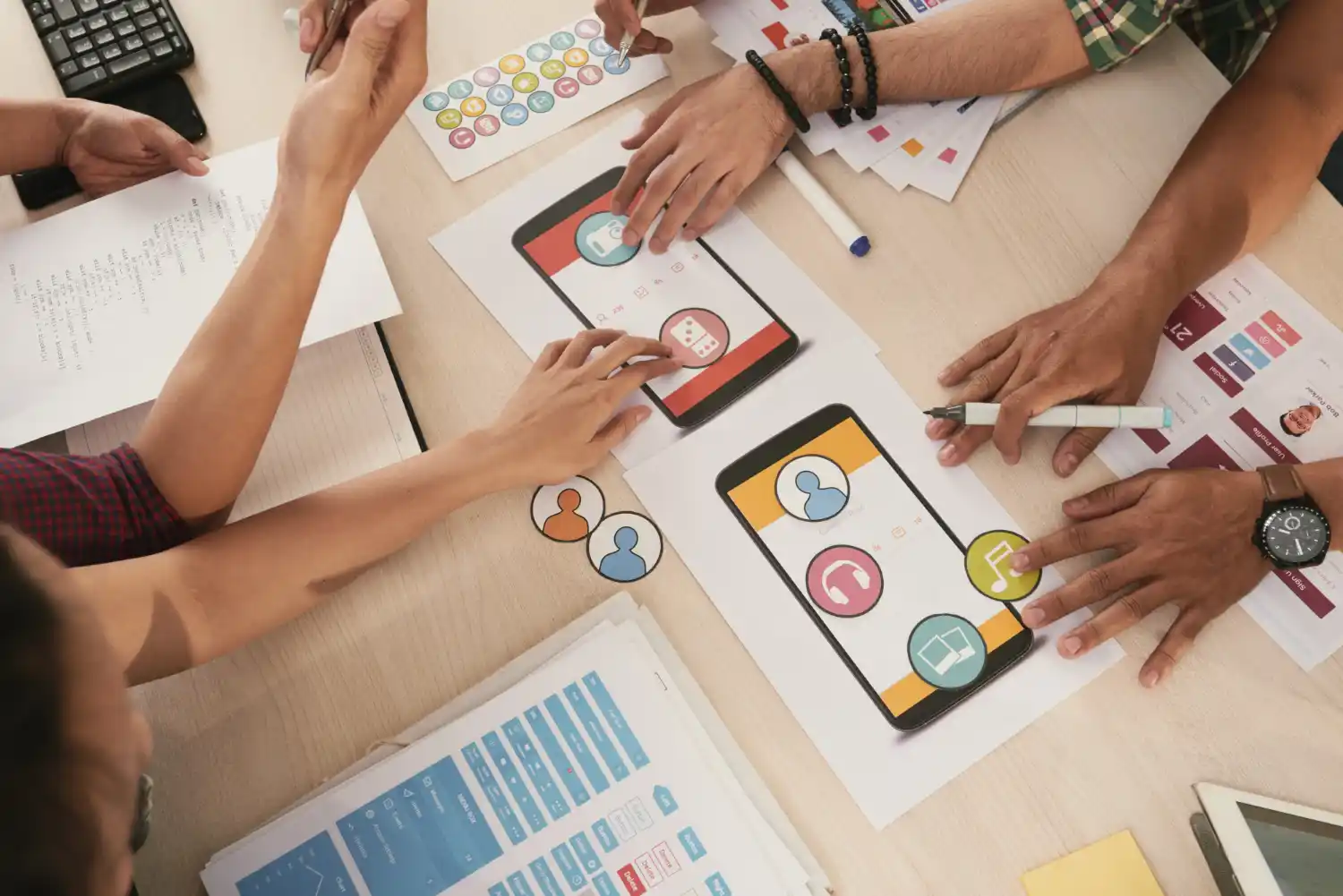
Everything About Mobile App Development

Article content
Mobile applications have become integral to modern business strategies, transforming how companies engage with customers and optimize operations. For tech companies and recruitment agencies aiming to enhance processes, curtail costs, and amplify project profits, the realm of mobile app development holds immense potential.
This comprehensive article serves as a guide to navigating the intricacies of mobile app development, offering valuable insights for those keen on harnessing the power of these applications.
Let’s dive in! Shall we?
What is Mobile App Development?
Mobile app development refers to the process of creating software applications that are designed to run on mobile devices such as smartphones and tablets.
In today's tech-driven world, mobile apps have become essential tools for businesses to connect with their audience and streamline their operations.
To learn about the mobile app development process, keep reading!
The beauty of mobile app development lies not only in the lines of code but in the symphony of collaboration that brings ideas to fruition.
Mobile App Development Process (Lifecycle)
The mobile app development process involves several stages, each contributing to the app's overall success.
1- Ideation:
Ideation marks the inception of the mobile app development journey. During this phase, innovative ideas are brainstormed, refined, and molded into a clear vision for the app. It's about identifying the purpose of the app – whether it's meant to solve a specific problem, provide entertainment, or enhance productivity. In-depth market research is often conducted to understand user needs and preferences, helping to define the app's features and functionalities.
The ideation phase involves creating a blueprint that outlines the app's scope, its core features, and the value it aims to provide to its users. Stakeholders collaborate to crystallize concepts, and decisions are made about the app's target audience, intended platforms (iOS, Android, or both), and any unique selling points that could differentiate it from existing apps in the market.
2- Design:
Design is the bridge that transforms ideas into visual concepts and intuitive user experiences. The design phase encompasses both User Interface (UI) design and User Experience (UX) design, ensuring that the app not only looks appealing but is also easy to navigate and use.
UI designers focus on creating the app's visual elements – from color schemes, typography, and icons to layout structures. This visual design aims to resonate with the app's target audience, creating an aesthetic that aligns with the brand's identity and user expectations.
UX designers, on the other hand, delve into the user journey within the app. They map out user flows, wireframes, and interactive prototypes that outline how users will interact with the app's features. The UX design ensures a seamless and enjoyable user experience, considering factors like ease of navigation, minimizing user effort, and maximizing engagement.
3- Development:
The development phase brings the app to life by translating design and functionality into lines of code. Skilled developers utilize programming languages, frameworks, and tools suitable for the chosen platform(s) to craft the app's features and functionalities.
During development, code is written to handle user interactions, data processing, and integration with external services. Developers ensure that the app is responsive, scalable, and performs well even under heavy user loads. This phase requires meticulous attention to detail and adherence to best coding practices to create a stable and robust foundation for the app.
4- Testing:
Testing is the gatekeeper that ensures the app's quality and user satisfaction. Rigorous testing involves systematically assessing the app's functionalities, user flows, and compatibility across different devices and platforms. Quality assurance experts identify and report bugs, glitches, or issues that might impact the app's performance or user experience negatively.
This phase includes various types of testing, such as functional testing (ensuring all features work as intended), usability testing (evaluating user-friendliness), performance testing (assessing responsiveness and speed), and security testing (ensuring data privacy and protection). Iterative testing and refinement are key to addressing issues and ensuring a polished app.
Mobile app development is a journey where innovation thrives in the crucible of code, transforming ideas into interactive realities.
5- Deployment:
Deployment is the culmination of efforts, marking the point at which the app becomes accessible to its intended users. After successful testing, the app is prepared for launch on platforms like app stores (e.g., Apple App Store, Google Play Store). Developers package the app, ensure it meets platform guidelines and requirements, and submit it for review.
Once approved, the app is published and made available for download or purchase by users. This phase involves crafting compelling app descriptions, creating engaging visuals, and optimizing the app's listing to attract users. The app's initial launch is a crucial moment, and its availability to users marks the realization of the development journey.
Great! Now keep reading tofind out more about different app device platforms.
Mobile Applications and Device Platforms

When it comes to mobile app development, two dominant platforms stand out: iOS and Android. A fundamental understanding of the differences between these platforms is crucial for crafting successful apps that cater to a wide user base while delivering optimal user experiences.
Let’s see!
iOS:
Apple's iOS is known for its cohesive ecosystem, characterized by a consistent user interface and strict app review guidelines. iOS apps are developed using Swift or Objective-C programming languages and are exclusively available on the Apple App Store. The advantage of this platform lies in its relatively standardized hardware, allowing developers to create apps that perform consistently across a range of iOS devices.
Additionally, iOS users tend to be early adopters and are often more willing to pay for apps. This presents monetization opportunities, particularly for paid apps or those with in-app purchases. However, the stringent app review process can lead to longer approval times and necessitates compliance with Apple's guidelines.
Android:
In contrast, Android offers a broader range of device options from various manufacturers. This diversity brings both opportunities and challenges. Android apps are developed primarily using Java or Kotlin programming languages and are distributed through the Google Play Store. The openness of the Android ecosystem allows for more flexibility in app development, but it also requires careful consideration of hardware fragmentation.
While Android holds a larger global market share, the audience can be more fragmented in terms of device capabilities, screen sizes, and OS versions. As a result, developers need to account for these variations to ensure a consistent user experience across a multitude of devices.
Alternatives for Building Mobile Apps
There are various approaches to building mobile apps, each with its pros and cons:
1- Native Applications
Native apps are developed for a specific platform (e.g., iOS or Android) using programming languages and tools provided by that platform. They offer excellent performance and full access to device features.
2- Cross-Platform Applications
Cross-platform apps are designed to work on multiple platforms using frameworks like React Native or Flutter. They streamline development for both iOS and Android while maintaining a consistent user experience.
3- Hybrid-Web Applications
Hybrid apps combine web technologies (HTML, CSS, JavaScript) with native components. They offer a balance between cost-efficiency and performance.
4- Progressive Web Applications (PWAs)
PWAs are web apps that offer a native app-like experience. They can be accessed through web browsers and installed on the user's home screen, reducing the need for extensive downloads.
Comparing Native vs. Hybrid Applications
The choice between native and hybrid approaches shapes the app's performance and development efficiency.
As we mentioned, native apps are tailored for specific platforms, delivering optimal performance and a seamless user experience. However, they can require more resources due to separate development for iOS and Android. On the other hand, hybrid apps offer cross-platform compatibility and streamlined maintenance, though they might sacrifice some performance and native feel.
Deciding between these approaches hinges on factors like performance demands, budget, timeline, and user experience goals: Native development suits resource-intensive applications, while hybrids expedite development and reduce costs.
Balancing these considerations ensures that the chosen approach aligns with the app's objectives, ensuring its success in a competitive mobile app landscape.
The Mobile Application Front-End
The front-end stands as the gateway to user interaction and engagement. At its core, the front-end encompasses the user interface (UI) and user experience (UX) design, forming the visual and interactive elements that users directly engage with.
It's not merely about aesthetics; a well-crafted front-end has the power to transform an app into an intuitive, engaging, and indispensable tool for its users.
In the world of mobile app development, every bug is a stepping stone, and every breakthrough is a testament to the power of persistence.
The Mobile Application Back-End
While the front-end of a mobile app captures user attention, it's the back-end that powers the app's core functionality and ensures that operations run smoothly.
The back-end encompasses a sophisticated ecosystem of server-side development, database management, and data storage that forms the backbone of the app. A well-constructed back-end not only guarantees optimal performance but also safeguards sensitive user information.
How to Select the Best Mobile App Development Partner
Embarking on a mobile app development journey is an exciting endeavor, and choosing the right development partner can significantly impact the success of your project.
To ensure a successful partnership, consider the following key factors when selecting a mobile app development partner.
- Expertise and Specialization: A development partner's expertise aligning with your project's requirements is paramount. Scrutinize their technical skills, programming languages, and frameworks. An ideal partner will have a deep understanding of the platforms you're targeting and will be well-versed in the latest industry trends. Specialization in particular domains, such as e-commerce, healthcare, or gaming, can also bring valuable insights to your project.
- Compatibility and Communication: A successful partnership hinges on compatibility beyond technical expertise. Effective communication, shared values, and a collaborative spirit are crucial. Choose a partner with a transparent communication process, fostering open discussions, and regular updates.
- Project Management Approach: Understanding the development partner's project management approach is essential. Inquire about their methodologies, such as Agile or Scrum, to ensure alignment with your preferences.
- Innovation and Problem Solving: Mobile app development often involves navigating unforeseen challenges. An ideal partner should be proactive in suggesting solutions, adapting to changes, and offering creative insights that enhance the app's functionality and user experience.
- Scalability and Post-Launch Support: Consider the development partner's ability to accommodate future growth. A partner who understands the importance of scalability can ensure that your app remains robust even as user demands increase. Additionally, inquire about their post-launch support services.
- Budget and Timeline: While cost is a factor, prioritize value over the lowest price. Budget constraints are important, but weigh them against the quality of service, expertise, and the partner's ability to meet deadlines. Transparent pricing and a clear outline of the development process help establish realistic expectations.
Is increasing your project profits what you have in mind? Then meet Vision Deck!
Meet Vision Deck: Mobile App Development Experts

At Vision Deck, our mission is clear: We are dedicated to helping you elevate your IT project profits. Rooted in a commitment to excellence and a resolute focus on delivering results, we offer a transformative approach to mobile app development.
Discover a unique way to find, hire, and collaborate with world-class remote engineering talent based in Latin America. Our talent pool comprises individuals who are not only proficient in technical skills but also fluent in English and living in US time zones. Every member of our team undergoes rigorous vetting, ensuring a seamless integration of soft and technical skills.
Beyond software development, we provide a holistic suite of services designed to empower your projects and foster success:
- Smooth Recruitment Process: Embark on your project journey with unwavering confidence. Our fixed hourly rates are meticulously structured to enhance your business profits while ensuring an effortless and stress-free recruitment process. The freedom to cancel at any point comes without any associated risks, granting you peace of mind as you propel your projects to new heights.
- Cost-Free Talent Acquisition: Navigating the landscape of talent acquisition can be labyrinthine and costly. At Vision Deck, we simplify this intricate process for you. Access top-tier Latin American talents without any supplementary fees. These individuals aren't just skilled; they are meticulously matched to align seamlessly with your business needs, ensuring that your projects are propelled by the very best.
- Seamless Timezone Alignment: For us, communication knows no boundaries. We function within your time zone, guaranteeing you are perpetually connected with your remote team. Collaboration becomes intuitive and effortless, as our seamless timezone alignment bridges geographical gaps.
Unlock a new dimension of excellence that promises to reshape your mobile app development. Reach out to us and let’s get started!
Conclusions
In sum, mobile app development stands as a dynamic realm brimming with boundless opportunities for businesses to innovate, captivate, and thrive. This journey through innovation is not just a means to an end but a transformative experience that reshapes how companies connect with their audience and cater to their needs.
As we draw this exploration to a close, several key takeaways emerge, underscoring the significance of understanding the development process, platform dynamics, and the pivotal role of expert partners like Vision Deck.
To get your development started, feel free to contact us and we’ll help you shape your project!

